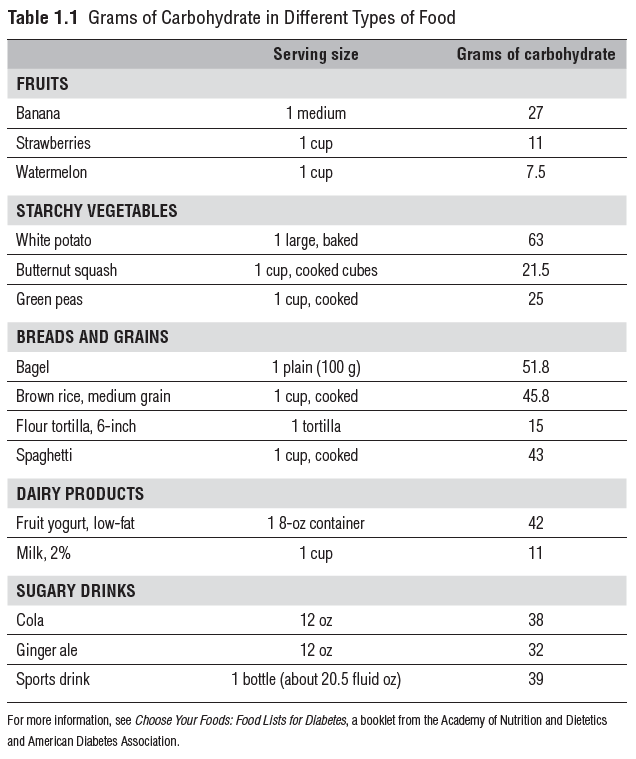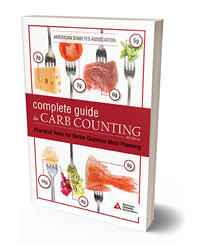How Does Food Impact Blood Glucose?
Whether you have recently been diagnosed with diabetes or prediabetes, or have been managing it for years, you probably know that what you eat has a big impact on your blood glucose.

Carb counting is a meal-planning method that can help people with diabetes manage their blood glucose levels. If you have prediabetes or type 2 diabetes, carb counting can help you manage your blood glucose level and feel your best, whether or not you take any diabetes medications. If you have type 1 diabetes, carb counting can help you match your mealtime insulin dosage to the amount of carbs you are eating. Overall, carb counting can be a great tool, but it may not be for everyone. It takes a lot of work to find out how many carbs are in different foods, and you have to be diligent in keeping track of what you’re eating and adding up the carbs. Read on to learn more about what carb counting is and whether or not it’s right for you.
As you may guess from the name, carb counting involves adding up all the carbohydrate in the foods you eat. Counting carbs in the food you eat can help you predict how much glucose will be entering your bloodstream after you eat. To do this, of course, you need to know how much carbohydrate is in different foods.

There can be a wide range in the amount of carbs in different foods, even within the same food group. As you can see in Table 1.1, a medium banana has 27 grams of carbohydrate, while 1 cup of strawberries has 11 grams of carbohydrate. Both are fruits, but the banana has more than twice the amount of carbohydrate. If you decide to try carb counting, you’ll rely on charts and tools like this to track the amount of carbohydrate you eat throughout the day.
The short answer is no. But for people living with diabetes, awareness of daily carbohydrate intake along with blood glucose monitoring helps inform food choices that can improve blood glucose trends. All carbohydrate foods are not created equal and all people with diabetes do not experience the same response to individual foods.
Limiting less healthy carbohydrate food choices like those that contain added sugars can definitely help, because they contribute concentrated amounts of calories and fats and add little in the way of essential vitamins and minerals. But many carbohydrate sources like vegetables, fruits, pulses (beans, peas and lentils), and whole grain foods provide dietary fiber in addition to essential vitamins & minerals. Consuming at least the recommended amount of dietary fiber (25-35g per day) can modestly reduce A1C in addition to reducing risk of all causes of death for people with diabetes.
There is no ideal percentage of calories from carbohydrate, protein, and fat for all people with diabetes. Each person’s eating plan should be based on their preferences, patterns, and overall health goals. Carb counting can help you keep track of the types of carb foods that you are eating and find ways to eat the foods you enjoy while keeping your blood glucose in your target range. Your personal carb goal may be lower than what you used to eat, but carb counting along with blood glucose monitoring before and 2-3 hours after meals can help you determine what will work best for you.
As a first step, your diabetes care provider will work with you to assess your current dietary intake and set a realistic carbohydrate goal for each meal and snack throughout the day. Then, you will use a variety of tools to keep track of your carb intake and choose foods that help you stay within those goals. If you’re using a blood glucose meter, you might check your blood glucose before and 2-3 hours after your meals to see how different meals affect your blood glucose trends. Every few months, check in with your diabetes care provider to check your A1c and other health indicators, review your carb intake and its effect on your blood glucose, and make changes as needed.
If you think carb counting might be right for you, check out our book, Complete Guide to Carb Counting, for more information and guidance. This book will teach you:

- How to find carb count information about the foods and beverages you consume
- How to measure the ingredients and portions of the foods you eat
- How to keep track of what you eat and the amount of carbs in your meals
- Advance carb counting methods to match insulin to carbs
To order directly from the ADA, click here.